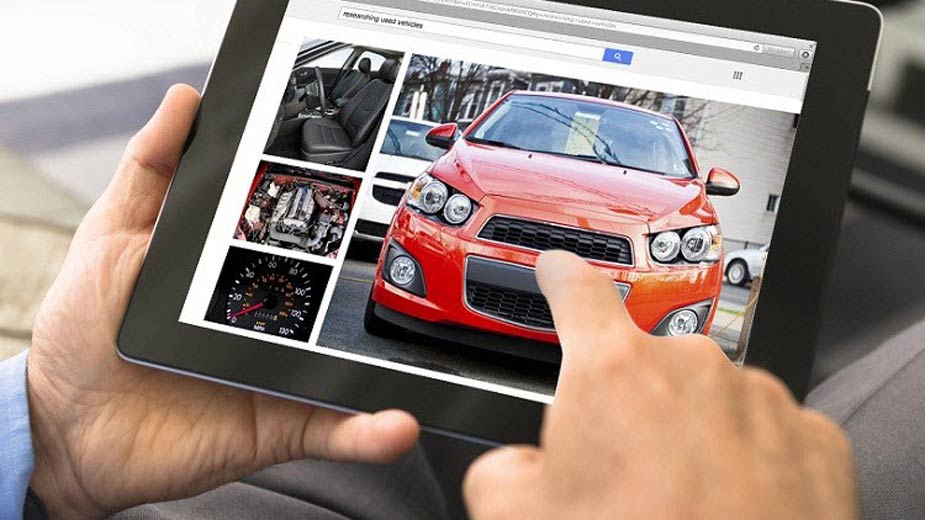Internet Becomes Auto Showrooms’ Front Door
YOUNGSTOWN, Ohio — Gone are the days of customers spending weekend after weekend shopping for a car. No longer do they have drive from one dealership to the next until they’ve talked to every salesman in town.
All it takes now is a computer or a smartphone.
“People used to go to seven or eight dealerships,” says John Stanko, marketing director at Boardman Subaru. “Now, it’s one, maybe two. People do their shopping and comparing before they get here.”
Visit almost any dealership website, from megastores that stock hundreds of new cars to small-town dealers that sell a hundred cars a year, and it’s more than likely that a small chat box will pop up in the corner, asking if you need help.
Or, in some cases, the website asks you to fill out a short form with contact information and what you’re looking at. Through those forms and boxes – and any phone or email follow-ups – customers can get any information they want.
At many dealerships, internet leads are run through what’s known industrywide as a “business development manager,” whose job it is to work with customers via the internet and get them into dealerships. That can mean relaying pricing, car features – even financing information when the process gets far enough along and a customer is ready to come to the showroom.
“It’s a platform to get people here. Last month, we had 37 people come into the dealership just through internet leads alone,” says the business development manager of Preston Auto Group, Taylor Cougras. “It generates a lot of people and a lot of opportunities.”
At Preston, leads are relayed to the sales manager when a customer is ready to come in to look at a car. The customers are then assigned to salesmen, who have all of the information passed between the business development manager and customer, on a rotating basis.
It’s rare, they note, for a customer to buy a car without stepping foot inside a dealership.
“You can get all the information you want over the internet, but there’s no substitute for coming to a store to drive a car or seeing it in person,” says Brian Grischow, internet manager at Diane Sauer Chevrolet in Warren. “You can do all the research in the world, come into a dealership, [then] sit in it and find out you hate it.”
At Boardman Subaru, Stanko recalls only a few deals transacted entirely on the internet, although he sees the industry moving in that direction. That shift is changing the way showrooms operate. Rather than wait for customers to wander onto the sales floor, sales staff can follow up on leads generated through the dealership website or third-party sites such as Cars.com and AutoTrader.com.
And with the expanding role of the internet, some dealerships are looking at whether to add internet-only staff, who would focus entirely on working with customers who contact the dealership online. No such department is in place yet at Boardman Subaru, although it’s been on the table as the dealership expands.
“With nine guys selling 200 cars a month, it’s easy at any given moment to go from completely dead to completely busy,” Stanko says. “The industry standard in responding to an internet request is 10 to 15 minutes. And if everyone’s locked up with customers, it can take hours. There’s still work to be done.”
The reason many customers turn to the internet is convenience. Rather than go from dealership to dealership and asking about the features of each model you’re interested in, the price and financing options, it can be done from the comfort of home or on a smartphone.
But just how much of the process is done through digital communication is entirely up to the customer.
“For some people, it’s as easy as ‘You’re interested in this? Great. When can you come in?’ ” Cougras says. “But for others, they want to figure out the details and pricing before they’re comfortable with coming in.”
The internet has also played a role in leveling the field, both for dealerships and customers. On average, customers have a better idea of what’s available, what they want and how much they’ll have to pay before they set foot inside a showroom.
“Probably between two-thirds and three-quarters of people will do some kind of research before they see us,” Grischow says. “The function is very important to us.”
On the dealer side, the internet removes everything from the equation except the dealership staff.
Almost all Subaru dealerships websites have standardized formats, Stanko says. Most dealership websites list the same information, including new-car inventory, used-car inventory and specials that customers can take advantage of. The only thing that separates a dealership in Dallas from one in Boardman is the staff working with the customer.
“What we have to work on is being quick, informative, professional and getting into a dialogue with those people because it becomes harder to stand out, especially as we’re competing even with other Subaru dealerships,” Stanko says.
With the auto industry catching up to others in its use of the internet, its role is quickly becoming set in the day-to-day operations of showrooms around the world. It’s not, all agree, something that’s going away.
“It’s easy to just click your mouse around and find what you want,” Cougras says. “We live on our phones and that drives a lot of our business.”
Copyright 2024 The Business Journal, Youngstown, Ohio.


